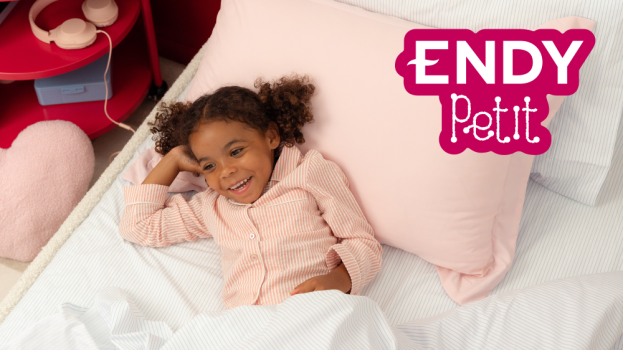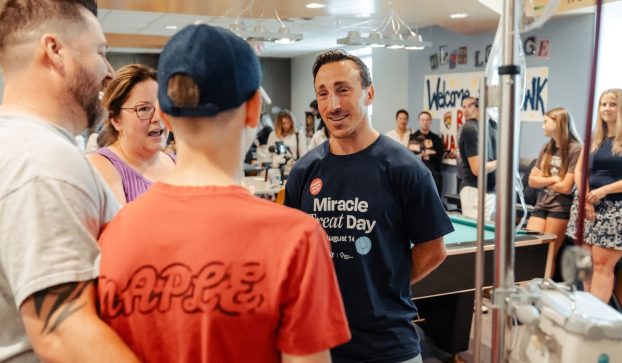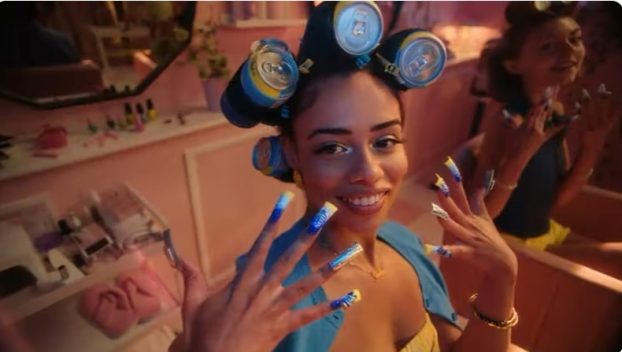Brands have so many new opportunities to create personalized experiences that engage their core demo, and many appear to be choosing several smaller-targetted executions instead of a powerful mass-media push. But then this summer, P&G’s Olympic online-turned-TV mass-reaching “Thank You Mom” tearjerker campaign highlighted the moms behind the athletes to industry accolades. It sparked a conversation. With so much focus on individual, niche experiences, are brands losing mass audiences because they’re too focused on micro ones? Strategy assembled a panel of experts to ask what happened to mass advertising.
Moderators
Joan McArthur, president, Joan McArthur Training & Consulting
Mary Maddever, executive editor, strategy
Panelists
David Grisim, associate marketing director, P&G
Matthew Litzinger, co-CCO, Cossette
David Crichton, partner, Grip
Jennifer Davidson, VP marketing, domestic brands, Molson Coors
Lauren Richards, communications consultant
Claude Carrier, president, DentsuBos
Mallika Kazim, brand marketing director, LG
Glen Hunt, consultant
Maddever: Are brands missing an opportunity to reach the widest audience possible when spending money on all these other programs? It’s not a question of all or nothing – but has the balance shifted too far? Am I going to feel a brand is iconic if I don’t see a commercial for three years?
Litzinger: Is that because [a commerical is] what you thought branding was growing up? Because there’s a whole new group of people growing up now. I don’t know if the criteria by which you judged 20 years ago is the criteria by which you judge now.
Richards: I don’t know if brand advertising is the iconic television spot. All the ways we’re connecting with consumers are brand advertising, but to a smaller group. It’s not necessarily as fast, but maybe it’s more engaging.
Litzinger: [TV versus experiences] is not an apples-to-apples comparison. A person’s involvement with a brand changes the criteria by which [it communicates with consumers]. In early stages talking at them matters because it’s just the brand’s voice. Five years later, it becomes “what is that brand associated with?” Ten years down the road, how the brand behaves matters more. If it’s a brand like Sapporo that’s new, then it makes more sense to do a 30 [second TV spot] that’s a “pay attention-to-us” basic.
Kazim: My category is youth centric. What we’ve seen is that unless you’re the huge brand in your category, kids still look at TV as the credibility that gives your brand presence. If you don’t establish that you’re a big brand or differentiate yourself on TV, you’re missing [the target]. You may think you can get away with social and digital in the superphone category, but you still need that balance. We anchored our latest campaign with TV then tied it into digital very tightly.
Grisim: Even before we went on TV [for “Thank You Mom”], we had several million views of our different digital content, and over a third of those that viewed it shared it. When we do niche targeting, you still need to tell the story and create that equity around the brand, otherwise it’s lazy marketing. If you just create this stunt – we’ve been guilty of that many times too – you think awareness is building equity or the brand story. It’s not.
Carrier: If you want to build a brand, you have to have a POV, a difference, a story and a way to tell it. A TV spot was one way to tell it. Online video was another. It’s always the same job. You need to make it relevant. If you don’t do that, you get nothing out of it. We need to distinguish between controlling the story and controlling the relationship.
Crichton: We had a situation with KFC where a guy said he was breaking up with his girlfriend because he’s in love with KFC. Our community manager wrote back, “Thank you very much, but we’re not ready for a serious relationship at this time.” Then a dialogue begins. But you’re only going to get there if you set it up as a brand.
Carrier: I go to Starbucks and have a total brand experience every time I step in. I’m not surprised that Starbucks doesn’t do a a lot of TV advertising. When I get a Coke, I need someone to remind me exactly what the story is. The Olympic campaign made me feel good about Coke again, even though it’s a brand I’ve known my whole life.
 McArthur: What do you make of the Chrysler campaign “Imported from Detroit” [with Eminem]?
McArthur: What do you make of the Chrysler campaign “Imported from Detroit” [with Eminem]?
Hunt: That’s a very specific occasion where everybody was waiting for them to say something. We wanted to hear their manifesto. They needed to do nation building. It wasn’t just selling a vehicle, they had something really powerful to share and [TV] was the right medium for them share it on. But is it TV the medium we’re talking about, or is it content?
Maddever: It’s advertising. It could be magazine, online, film, anything. A lot of the stuff you see in mass now is a piece of something else that doesn’t stand alone. It’s all great, but is it diluting the essence by having all these transactional elements? Are we stepping away from “What is my brand?”
Davidson: Good content is good content, whether it’s a commercial or an experience. You’ve got to pick your medium. It’s got to be the right content and the right insight.
Hunt: That’s the idea of integration. It’s a campaign. There needs to be “air support” and “ground troops.” When a bunch of divergent pieces speak with separate voices there’s no unity, it’s wasted effort. Think of a brand like Red Bull. Felix [Baumgartner] goes up to the top [for a stratospheric skydiving stunt], Red Bull gives him wings. But that’s a one-hour program across the entire world owned by Red Bull. I wouldn’t call it a stunt. It’s a brand personified.
Richards: We had a huge reliance on TV as the only place to build a brand. Leaving TV was like, “Oh my God. You cannot do that.” But yeah, you can. There are other channels. The consumer is different.
Kazim: In my industry (electronics), I don’t think anyone still has a budget to do pure brand spots. Everything I do has to move boxes. The big brand stuff isn’t necessarily transactional. You have to have a tie-in, which is why we’re seeing more of these pieces as part of a greater campaign message, and maybe a bit more transactional.
Richards: Tactics often drive business strategy instead of “How do we want to serve our messaging and create engagement?” Because there’s so much attention on new technology, so many people are putting tactics first instead of thinking how they strategically connect.
Carrier: The economic climate doesn’t help. It went from very brand-driven to very transactional-driven. We make up our minds through the emotional connection. If you look at things that are more transactional oriented, it may generate some quick sales, but it doesn’t do the rest. Red Bull worked because it was a very strong emotional trigger. There’s nothing wrong with using tactics when they drive an emotional trigger. It’s when they don’t that you’re not building the brand.
Hunt: We’re asking: what’s the brand’s core truth, what’s its essence? When asked, “Which is the most influential medium?” 36% of Canadians say TV – more than any other medium. Fifty-three percent say they were impacted in the last 12 months to make a purchase by television. People tend to overestimate the impact for new mediums at the beginning, and then underestimate it later on. Right now, we’re in a state of flux as there are some discretionary dollars to try something different. But what we find is a lot of people can’t infuse the brand into those messages, and then come back to the areas that work best for them.
Crichton: It’s funny we’re talking about TV. There’s an interview with William Bernbach, back in the early ’70s where he’s asked “Is this the demise of early advertising and branding?” TV, at the time, was going through a transition of fast cuts. You’d swear he was talking about the internet today. He was talking about TV being the demise of branding or great advertising, we’re talking about TV being the medium of great advertising.
Carrier: TV has a bad rap. I think it’s unfair and it’s based on the definitions in our mind of what TV is. Is it a fixed thing [in a house]? Is it my laptop? My tablet? My phone? Depends on where I am. All of it is TV in a way. When I watch online or on my phone, I’m using the new toys, but I’m using video.
Richards: One of the great ways we can evolve building brands is for marketers to really embrace experiential. It’s so much more about a brand building experience than being served a passive commercial. The attitude is that if we don’t do that as the underpinning, then we have an issue. It’s very expensive to meet people in a multi-pronged, engaging event, but I think the power of that kind of communication is fabulous.
McArthur: But the Chrysler TV spot was perfect. I don’t know how else you do that than on a mass scale.
Litzinger: They got my attention but I then go to the website and there’s no mention of it. Do I now think they’re full of shit? Is it a miss? If I had to chose between all of the touchpoints doing pretty good or one doing amazing and the rest suck, I would chose all of them doing pretty good. Because now I think they lied to me.
Maddever: Is it that transmedia hasn’t been mastered? Is there a way to do something as powerful as Molson’s “I Am Canadian Rant” if there were better understanding of transmedia?
Crighton: When online advertising showed promise, people said, “What is this thing, what do we do?” I’m not sure if the talent has caught up with the spend for the amount of stuff that floods through. You now see kids out of school that think in a different way. I think it went through a long period where the talent just wasn’t there.
Davidson: What we’re talking about, whether it’s “The Rant” or the Chrysler spot, has very high production values and packaged content where you have a lot of control around your voice. You put it on TV and shortly after it’s on YouTube, so de facto, it’s being shared. When it is a little more subtle like an experience or the conversations we have online, you’re not beaming anything out. You’re listening.
Litzinger: The format with which television presents its entertainment is still the best way for people to consume a message. There was something for TNT done eight months ago, and the line for it was, “We know drama.” They had some hidden cameras set up in a market square and a whole bunch of crazy shit happens to unsuspecting people. The ambulance comes, football players run out, a motorcycle drives past. It was an experience maybe 12 people had [but it] had 27 million views [and it] didn’t go on TV. But that’s a TV commercial.
Hunt: People used to be held captive. Now, it forces us to be more captivating because we don’t hold people to that space. In some case, we’re creating Seth Godin’s Purple Cow [theory]. The idea is, there’s a lot of cows, but if you saw a purple cow you’d go, “Hey look, a purple cow.” We have to create “purple moments.” But if it’s not tied to the core of the brand, it just creates a sugary veneer and we forget the purpose. In the case of “We know drama,” I don’t remember the name of that particular company. We have to do a better job at connecting it.
Davidson: For most big [Molson] brands that have the budgets, TV is still our largest medium. But we have begun to shift things. We do more digital and social media. But it really does depend on the brand objectives and the insight. It’s a balance. A really engaging television commercial is the beginning of a conversation, not the end.
McArthur: It’s also about the kind of brand you’ve got. Beer is very much a badge product that needs a fair amount of imagery around it to be effective. Whereas say, a big telecom company – I’ve seen tactics all over the place.
Crichton: We were doing branding for Bell all around “We are connected.” But we had a client who saw the benefit of that. He really understood that they had a voice.
Hunt: Every brand could be personified. There’s a reason at the core, why we could love it. Unfortunately, we don’t love a lot of telecoms. [Telus, for example] has a purpose devoid of the product, which is the “The future is friendly.” And it works for them. It’s like a relationship. I don’t ask for the sale the first time I meet you. I introduce myself and once we have that rapport, we work our way towards that.
Carrier: What’s hard is we live in the era of immediate ROI. Now, as soon as we do a spot, the following day they start sending sales reports. You’re being judged on that.
Crichton: It comes back down to the people. I was talking to a luxury car manufacturer who was given the opportunity to do something that was interesting and turned it down. The guy said, “We don’t really believe in branding because this market is so small for us. We can put our most expensive cars into China and 200 million people will buy them simply because of the name.” What he doesn’t realize, is that before him, the brand was built up. It’s short-term thinking.
Maddever: In light of decreased budgets, is there a sense of need at the brand level for continuing to build brand equity? All the money that went into different programs, is any of that coming back into advertising?
Kazim: We were heavy on brand advertising and brand equity was going up, and then we stopped and it leveled off. And [people ask], “What happened?” A lot of brands chasing the smaller pieces may have experienced a level or a dip and will come back to centre. My gut is that in a year or two, you might see budget going back to brand advertising. I don’t think anyone has [budget] allocated right now because we’ve been chasing [sales]. New media is cheap. It’s easy to try stuff on Facebook.
Grisim: We’re much more accepting of poor quality content in the digital space that we would never consider in other media.
Hunt: We’re obsessed with the new. It almost puts less weight on us to do something interesting in an existing medium. If I can make it cool, different and new, I don’t have to work very hard to make it good.
Grisim: We get tired of a great idea way faster than the consumer does. We have lost a bit of the art of the campaign. It’s partly driven by horrible clients who say, “I want a return,” and they get what they ask for. We’re not thinking long-term.
Kazim: Isn’t that just being good brand stewards versus not? Maybe it’s society. We’re all personally guilty of that. You start one thing and then go on to another.
Maddever: We’ve done polls asking consumers which new campaign they liked or drove them to action. The “not aware of that campaign” percentage was surprising.
Richards: With so many people tuning out, if you can crack through and make them know who you are, that’s powerful. It’s hard for consumers to remember. Whatever we can do to help them is huge.
Davidson: A brand like Coors Light is a great example. It’s rocky mountain, it’s cold, it’s refreshing. That’s driven the brand in Canada for 10-plus years. It might have a slightly different voice, but at the heart of it is an organizing idea that comes through. We might have walked away from it, maybe brought in new brand people, but then someone comes in, dusts things off and has the courage to go back.
Litzinger: [Despite] our supposed courage of breaking new ground, it may take just as much to look back.
Grisim: There’s a great opportunity to create more of a purpose behind our brands, speak in that consistent voice and have it be at the core of what our brand stands for.























